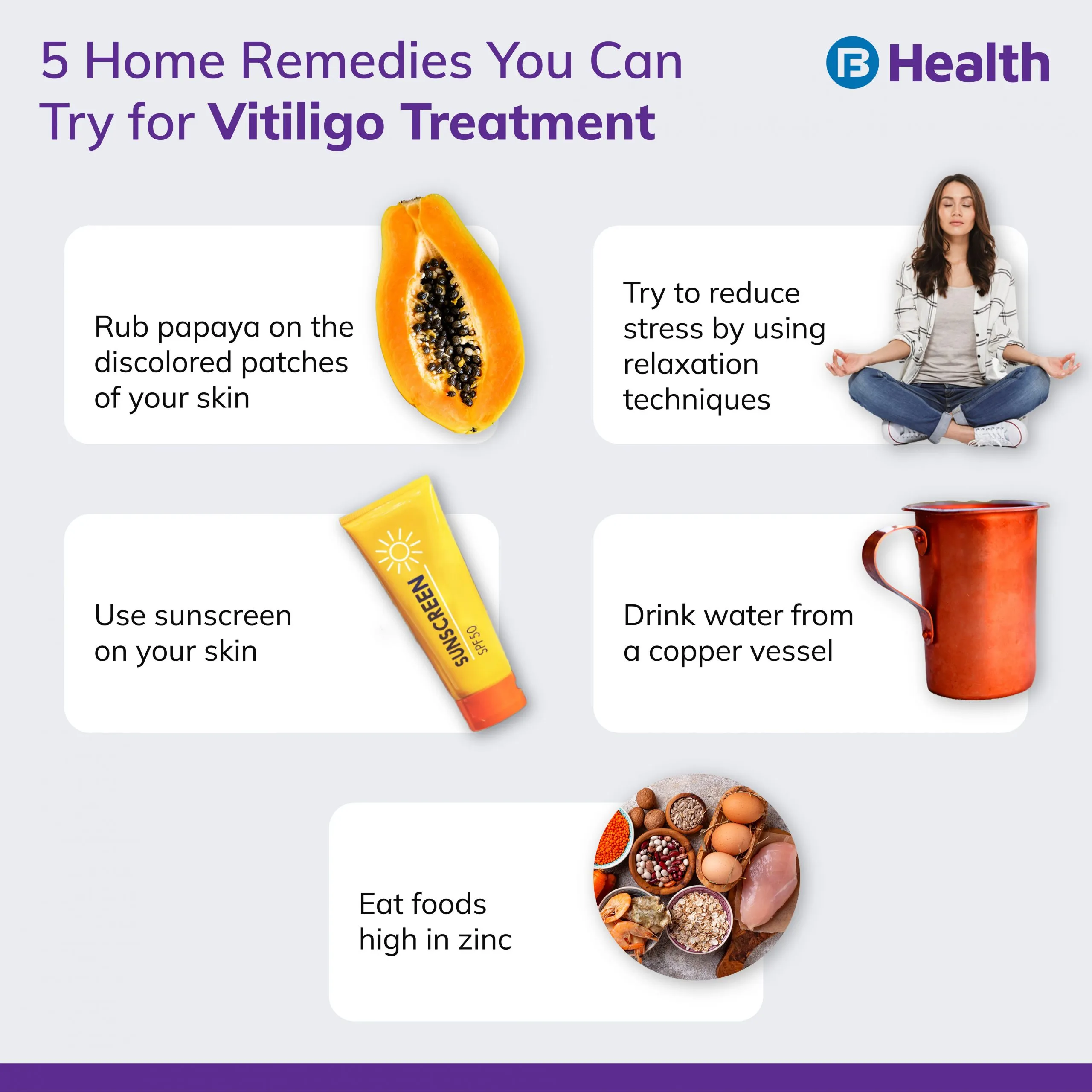Prosthodontics | 4 min read
What is Vitiligo Disease: Treatment, Causes and Home Remedies
Medically reviewed by
Table of Content
Key Takeaways
- Vitiligo skin disease is a common condition with patchy discoloration
- Genetic factors and autoimmune disorder are some of the vitiligo causes
- Vitiligo treatment doesn’t guarantee a cure but helps manage symptoms
Vitiligo skin disease affects up to 2% of the world’s people, and while it is known to affect all races and genders, research shows that it may have a slightly higher occurrence in women [1]. The skin condition vitiligo basically leeches skin color, so you may see patches of depigmented skin all over the body that stand out against your normal skin color.
While doctors cannot fully eliminate vitiligo disease, there are surgeries and medicinal options to help minimize its appearance. While it is not compulsory to get vitiligo treatment, you may opt for it for aesthetic reasons. Read on to understand the vitiligo skin condition better and know your options for vitiligo treatment.
Additional Read: Sunburn Treatment: 5 Top Remedies to Ease Your Pain and IrritationVitiligo causes
While research is still underway about vitiligo causes, scientists believe that a variety of factors have a role to play. These include certain genes that may cause this skin disease to be inherited as well as health conditions that weaken immunity. The latter may affect the melanin pigment of the melanocyte cell that gives skin its color.
Similarly, there may be certain disorders in the nervous system that trigger the release of materials causing these cells damage, or these cells themselves may terminate due to internal flaws. Usually, people who have autoimmune diseases like alopecia areata or psoriasis have higher chances of getting vitiligo. That being said, even sunburn, skin injury that causes trauma, or other factors in the environment can be vitiligo causes.

Common symptoms of vitiligo disease and risk factors that accompany them
Major signs of vitiligo include the following:
- Discolored spots on the skin, which can also include your eyes and the mucous membranes of your nose or mouth
- Discolored spots on your head, hair, and face that turn white prematurely
Vitiligo disease may lead to the following:
- Extra sensitivity to sunlight, so the affected skin area may burn instead of getting tanned
- Abnormalities or sensitivities in retinas or color variations in irises, but vision is usually not affected
- Other autoimmune diseases
- Mental health problems due to embarrassment or feeling different

Vitiligo treatment
All treatments for this skin disease seek to hide the patchy color or reduce the skin color contrast. Here are the common therapies for vitiligo treatment:
Camouflage therapy
Camouflage may hide vitiligo either permanently or temporarily by using cosmetics such as liquid dyes, foundations, self-tanning solutions, or even micro pigmentation, also known as medical tattooing.
UV therapy
This kind of phototherapy requires multiple sessions for several months to eliminate or slow down vitiligo. This treatment is best for those whose necks, legs, and arms display vitiligo.
Surgical options
There are various kinds of cosmetic surgery options, such as skin grafting, blister grafting, or repigmentation via cellular transplant. Make sure to consult your doctor and discuss what measures will work best for you.

Medication
Corticosteroid creams, as well as creams that impact the immune system, may be used to restore skin color. These may cause side effects, so use them only when your dermatologist prescribes them to you.
Depigmentation
This vitiligo treatment lightens your overall skin so that it matches the discolored areas. This may take up to 9 months and may cause irritation, dryness, and other side effects.
Additional Read: Contact Dermatitis: 2 Major Types and Effective Skincare Tips for Treatment!While you don’t usually develop serious complications due to vitiligo disease, it may affect your vision and hearing and make you more prone to sunburn. So, be careful of your overall health and make sure you treat your mental health too. It is common for those looking for vitiligo treatment to also feel stress and social stigma. Counseling can help you get your confidence back and break this cycle.
For the best suggestions regarding vitiligo treatment, you can consult an online dermatologist near you on Bajaj Finserv Health. Apart from vitiligo, you can get guidance for a range of skin conditions like chicken pox, dermopathy caused by Graves’ disease, or something as simple as moles treatment. This way, you can address any issues that affect your skin and ensure your health is on track!
References
- https://www.aad.org/public/diseases/a-z/vitiligo-overview
- https://www.karger.com/Article/Fulltext/506103
Disclaimer
Please note that this article is solely meant for informational purposes and Bajaj Finserv Health Limited (“BFHL”) does not shoulder any responsibility of the views/advice/information expressed/given by the writer/reviewer/originator. This article should not be considered as a substitute for any medical advice, diagnosis or treatment. Always consult with your trusted physician/qualified healthcare professional to evaluate your medical condition. The above article has been reviewed by a qualified doctor and BFHL is not responsible for any damages for any information or services provided by any third party.





